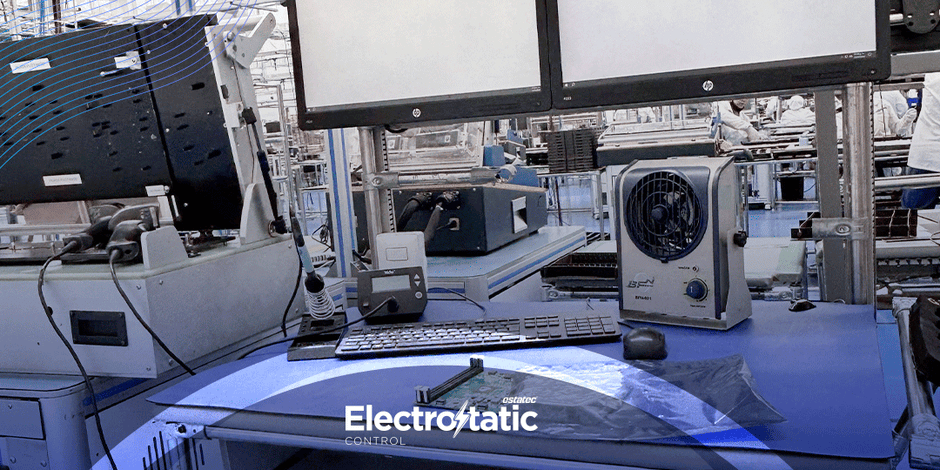Static electricity is a familiar phenomenon to most of us, often experienced as a
minor nuisance when we touch a doorknob after walking on a carpet. However, what many people may not realize is that static electricity, when left uncontrolled, can pose significant risks, particularly in environments laden with sensitive electronic equipment.
Static electricity occurs when an imbalance of electric charges within or on the
surface of a material persists until it can move away, typically resulting in a shock.
While these shocks are usually harmless to humans, they can be catastrophic for
electronic devices. The delicate circuits in modern electronics, from computers and
smartphones to industrial machinery and medical devices, can be easily damaged by even a small discharge of static electricity.
One of the primary risks associated with static electricity is Electrostatic Discharge
(ESD). ESD can lead to immediate damage, latent defects, or complete failure of
electronic components. This is particularly concerning in industries such as
aerospace, automotive, healthcare, and IT, where the integrity and reliability of
electronic systems are paramount. For instance, a static discharge can corrupt data, degrade the performance of a semiconductor, or even render a device completely inoperable. Such incidents not only result in costly repairs and replacements but also cause significant downtime and loss of productivity.
The sources of static electricity are ubiquitous and often overlooked in everyday
environments. Common sources include:
● Human Movement: Walking across a carpet can generate thousands of volts
of static electricity.
● Synthetic Materials: Many office environments are filled with synthetic
materials, from carpets and chairs to packaging materials, all of which can
generate static charges.
● Environmental Conditions: Dry air, often found in climate-controlled
environments, exacerbates the build-up of static electricity.
Recognizing the risks, various ESD solutions have been developed to mitigate the
impact of static electricity. These solutions are designed to either prevent the build-
up of static charges or to safely dissipate them before they can cause harm.
● ESD Flooring and Workstations: Specially designed ESD flooring and
workstations are essential in environments where electronic components are
handled. These surfaces are conductive and grounded, allowing static
charges to dissipate safely.
● Wrist Straps and Footwear: Personnel working with sensitive electronics often
use wrist straps and ESD-safe footwear. These devices ensure that any static
charge accumulated on a person is continuously and safely discharged to the
ground, preventing build-up.
● Humidity Control: Maintaining an optimal level of humidity can significantly
reduce the incidence of static electricity. Humidifiers are often used in
electronics manufacturing and data centers to keep the air at a suitable
humidity level.
● ESD Bags and Packaging: Sensitive components are often stored and
transported in ESD-safe bags and containers. These materials are designed
to shield the contents from static electricity and prevent the generation of
static charges.
● Ionization Equipment: In environments where grounding is impractical,
ionization equipment can neutralize static charges. These devices emit ions
that balance the electrical charges on surfaces and in the air.
Implementing ESD solutions provides several key benefits
● Protecting Equipment: By preventing ESD-related damage, businesses can
extend the lifespan of their electronic equipment, reducing the need for costly
repairs and replacements.
● Enhancing Reliability: ESD protection ensures that electronic systems operate
reliably, which is critical in sectors where precision and dependability are non-
negotiable.
● Boosting Productivity: Minimizing ESD-related downtime translates to higher
productivity and efficiency, as there are fewer interruptions due to equipment
failures.
● Ensuring Safety: In some cases, ESD can pose safety risks, especially in
environments with flammable materials. Proper ESD management reduces
these risks, safeguarding both personnel and property.
While static electricity might seem like a minor annoyance, its potential to cause
significant damage to electronic equipment cannot be underestimated. Awareness of the risks associated with ESD and the implementation of effective ESD solutions are crucial in protecting valuable investments.









